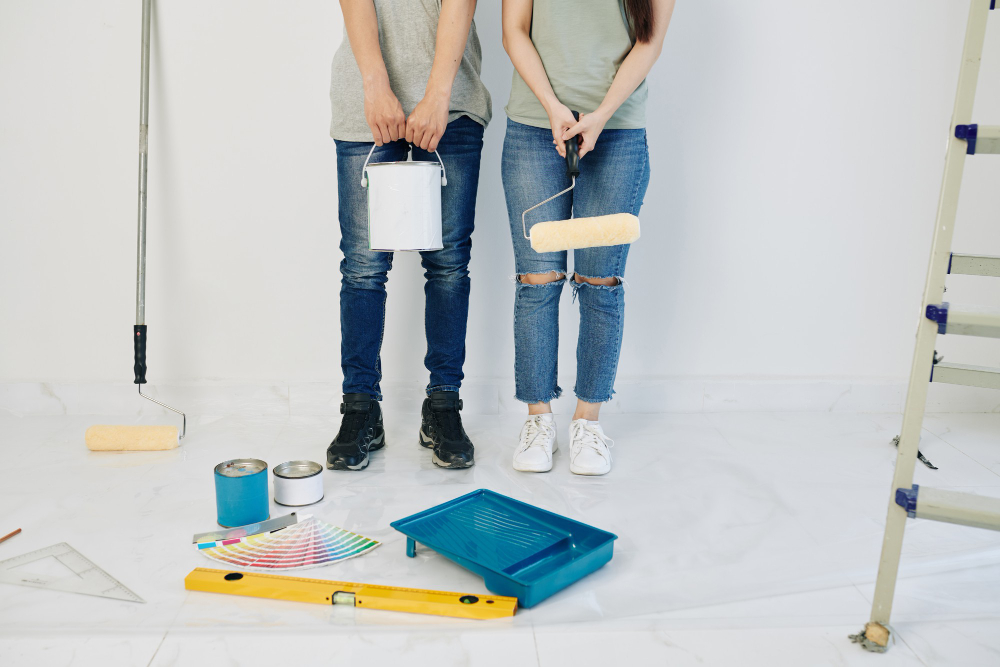The Ultimate Guide to Interior Painting Preparation

Tackling a paint job in your home can be one of the most rewarding DIY projects. Yet, it's crucial to get the preparatory phase right – it's the foundation of a vibrant and long-lasting finish. And as they say, the devil is in the details, so here's your ultimate guide to mastering the art of interior painting preparation.
Step 1: Assessing Your Interior
Perhaps the most underrated part of the painting process is the initial assessment. Here, you want to evaluate your home's interior to identify any issues that could affect the painting project, such as water damage, mold, or areas where the old paint is peeling.
Here’s what you should consider:
- Ceilings and Walls: Inspect for any visible damage or uneven surfaces, which may require spackling or sanding to achieve a smooth finish.
- Mold and Mildew: In humid areas like bathrooms and kitchens, check for signs of mold. It will need to be treated with a mold-killing primer before painting.
- Furniture and Flooring: If possible, remove or protect these items to ensure they stay paint-free.
This step is critical as it will help you make a detailed plan and purchase the correct materials for any necessary repairs.
Step 2: Gathering Necessary Supplies
Once you have a good idea of the condition of the surfaces and the work that needs to be done, it's time to gather your supplies. You’ll likely need:
- Painter's Tape: Essential for protecting areas you don’t want painted.
- Drop Cloths: To cover floors and furniture from paint splatter.
- Spackling Paste: Required to fill small holes and cracks.
- Sanding Tools: To smooth out spackled areas and remove any rough patches on the old paint.
- Cleaning Solutions: For washing the walls to ensure the paint adheres properly.
- Primer: A critical step to create a uniform base for the paint and cover any marks or repairs.
By having everything at your disposal, you can avoid unnecessary trips to the store, saving you time and energy.
Step 3: Furniture and Wall Obstacles
Before you start the painting process, it’s important to clear the room as much as possible. Either move the furniture to the center of the room and cover it with plastic or move it out entirely.
Remember to:
- Remove Fixtures: Take down light fixtures, outlet covers, and anything else that can be removed.
- Protect Items Left in the Room: Any remaining items should be covered or moved away from the walls to avoid accidental paint splatter.
A clear workspace will make your job easier and prevent damage to your belongings.
Step 4: Repair and Surface Preparation
This step is where the magic happens. Start with any necessary repairs, especially filling in nail holes or larger damage with spackling paste. Once the paste dries, sand the area until smooth.
Key Considerations:
- Proper Techniques: Apply spackling paste with a putty knife, and use fine-grit sandpaper to sand down the spackled areas.
- Best Practices: Sand the entire wall lightly to scuff the old paint, ensuring the new paint adheres well.
Finish this step by cleaning the surfaces with a mixture of mild soap and water to remove dirt and grease.
Step 5: Primer Application
Many DIY painters skip primer, but it’s a step that can make a significant difference in the end result. Primer not only helps the paint adhere but also ensures the true color of your paint stands out.
Here's what you need to know:
- Choose the Right Primer: There are different primers for various surfaces, such as drywall, wood, or metal. Make sure you select the right one for your interior.
- Apply Evenly: Whether rolling or brushing, make sure the primer is applied evenly to avoid noticeable strokes or lines.
- Time to Dry: Most primers need around 4 hours to dry properly before you can apply paint, but always follow the instructions on the product label for the best results.
Step 6: Paint and Techniques
As the final step of preparation, it's time to paint. Ensure you have the right tools, and the paint is well mixed.
Remember to:
- Cut In First: Use a brush to create a border on the edges of the walls and ceilings. This technique is called "cutting in" and ensures a cleaner look with the roller.
- Roll the Paint on the Walls: Roll the paint with a roller in small sections, using a "W" motion to evenly distribute the color.
- Apply in Thin Layers: Multiple thin layers will always look better than one thick coat. It also allows the paint to dry faster and prevents drips.
For the highest quality finish, wait 24 hours before applying the second coat.
Step 7: Post-Painting Clean-Up
Congratulations, you’ve made it to the final step! The big project is complete, and now it's time for the finishing touches.
Clean up by:
- Removing Drop Cloths and Tape: Carefully remove these items, starting with the tape to avoid peeling paint.
- Reassembling the Room: Put back any removed fixtures and items.
- Inspecting the Work: Take a moment to admire your work, and make any touch-ups if needed.
Exhaustive preparation is the pathway to a stunning end result. By following these thorough steps, you’ll achieve a beautifully painted interior that you can proudly call your own.
Mastering the art of interior painting is no small feat, but with the right preparation and a little guidance, anyone can achieve professional-looking results. Happy painting! Remember, if you're looking for professional painters in South Daytona, FL, contact Color Masters Painting today to get your free quote.